A defeated NDP means labour, progressive movements have to ‘fill that void,’ says CUPE head Hancock
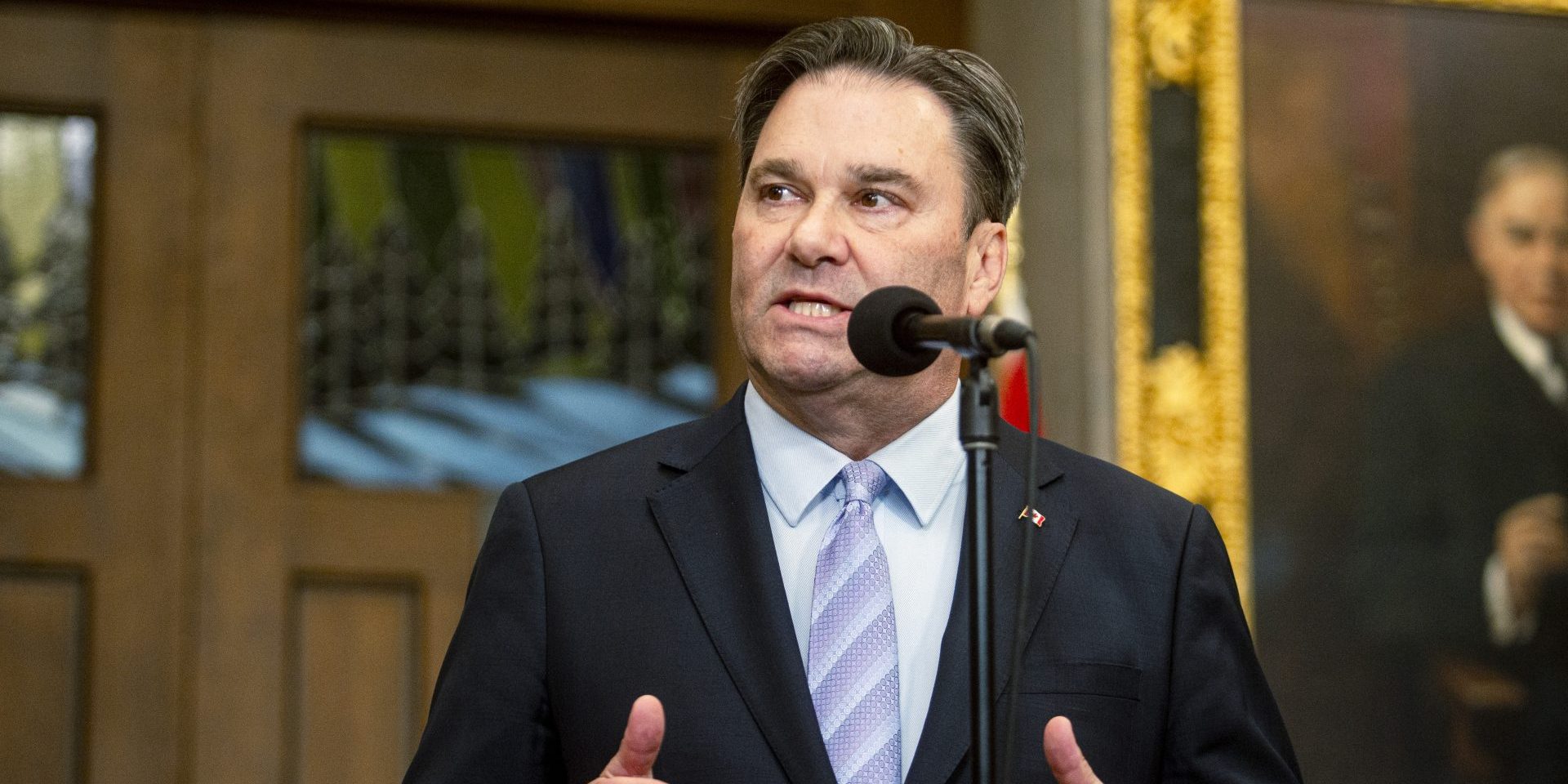
In the wake of a weakened NDP, progressive groups and labour movements need to be louder in their push back against Prime Minister Mark Carney, says Canadian Union of Public Employees national president Mark Hancock, and one national progressive movement is taking up the call, protesting what one organizer is calling the “very dangerous expansion of Trump-like policies in Canada.”
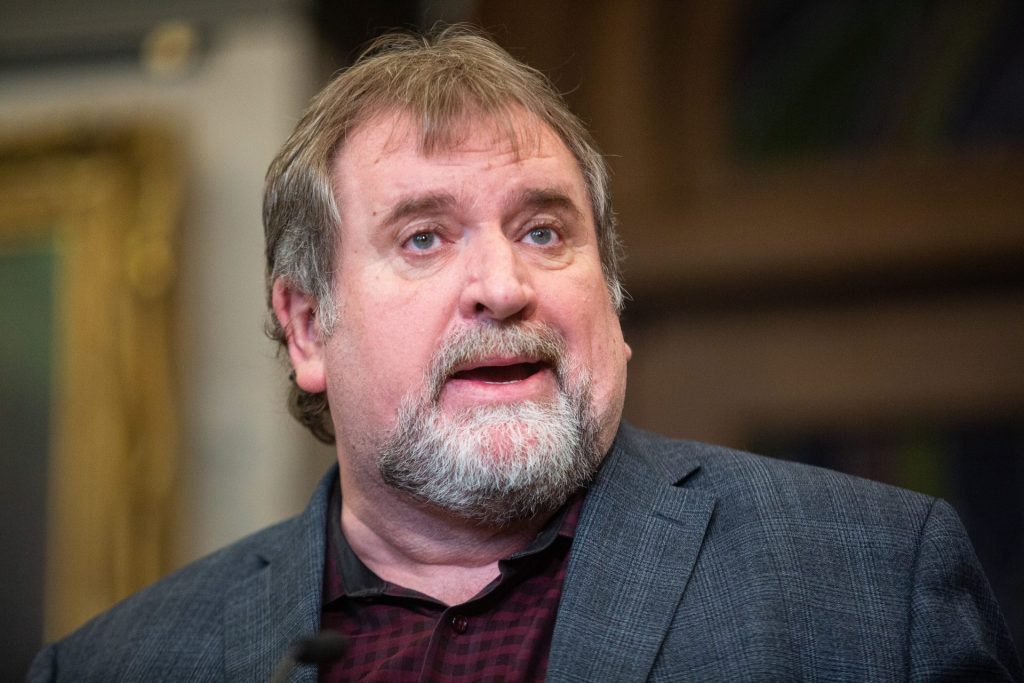
“When the government is doing something at odds with our rights as Canadians … it’s up to the labour movement—but also other progressive groups—to really step up and fill that void that’s there because we only have seven New Democratic MPs,” Hancock told The Hill Times.
Hancock said progressive groups and labour have to “make sure” there are more than just seven voices speaking out against moves that are “at odds with our rights” to ensure the government doesn’t “get away with a lot of things that they may want to.”
Draw the Line is seeking to do that. The national protest is part of a global movement taking place on Sept. 20, mobilizing groups from across the advocacy spectrum, including climate, labour, migrant rights, Indigenous, and pro-Palestinian activists and organizations.
Syed Hussan, the executive director of the Migrant Workers Alliance for Change, one of the groups behind the movement, said Carney (Nepean, Ont.) “got elected saying he would differentiate himself from [U.S. President Donald] Trump, but instead, he’s been championing Trump-like values at every turn.”
“It’s very clear to us that Carney is pushing forward an incredibly high [performance], anti-people, austerity, climate-destroying, anti-migrant agenda,” said Hussan, who is also a sessional lecturer of a course on migrant rights at the University of Toronto. He added this is leading to a “very dangerous expansion of Trump-like policies in Canada.”
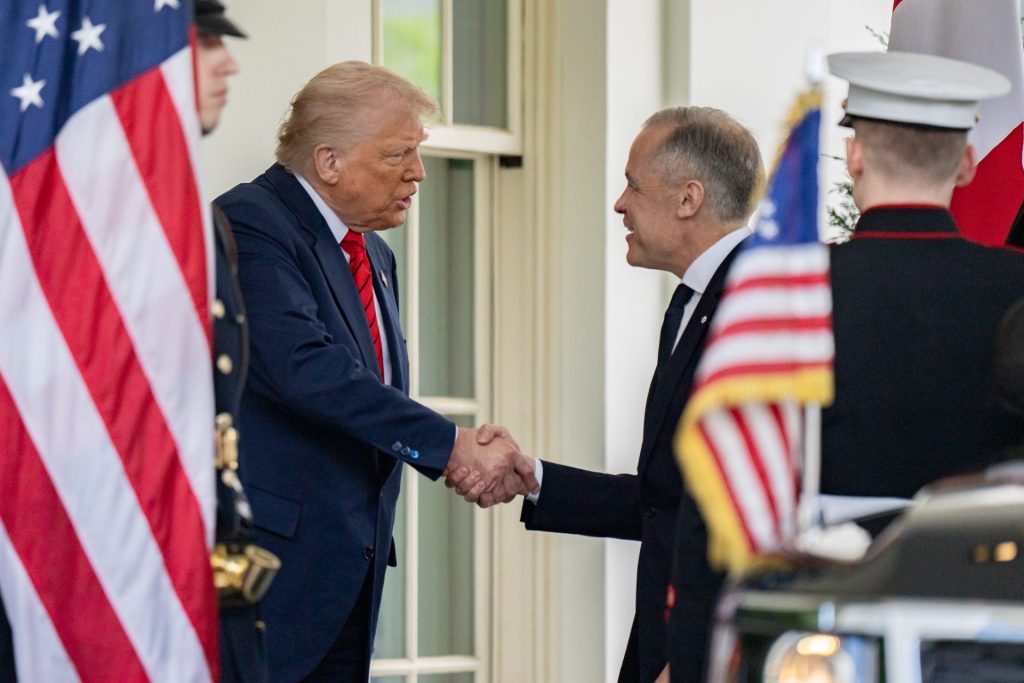
Demonstrations are set to take place in cities across Canada, including in Ottawa near Parliament Hill, and Hussan said the group is anticipating tens of thousands of people will attend.
Partners of the demonstration include Greenpeace Canada, Indigenous Climate Action, the Migrant Rights Network, the climate organization 350.org, and others.
Hancock, who recently defied the federal government’s back-to-work order ordering striking Air Canada workers back to their posts, said with the NDP’s loss of recognized party status, it doesn’t have the same resources it did in previous Parliaments.
“There’s no doubt that the shortage of NDP MPs is allowing this government to shift to the right,” Hancock said, pointing to the border security Bill C-2 and Bill C-5, The One Canadian Economy Act, as examples of the shift. “The Conservatives are happy to support those pieces of legislation, where in the past, if there had been a stronger New Democrat presence in the House, I’m not sure that that would have been the case.”
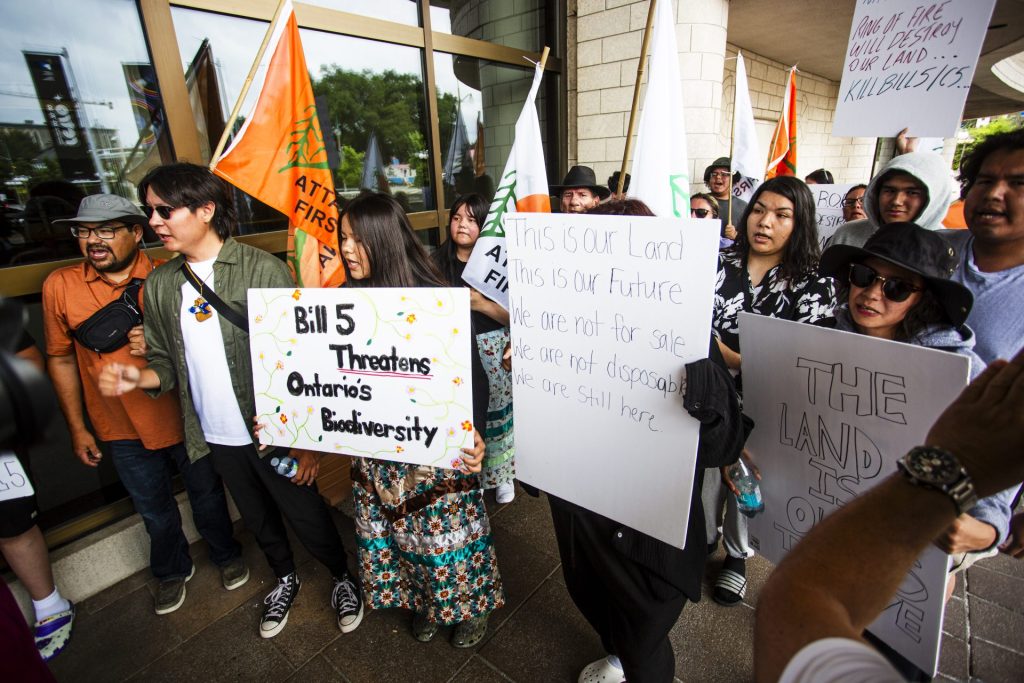
The threshold for recognized party status in the House is 12 seats. Status grants parties guaranteed seats on committees, a right to ask more frequent questions in Question Period, and financial resources to fund party research. The NDP has not been without party status since 1993.
“The Conservatives have the best leader they ever had with Carney, and that’s a real challenge for any of us on the progressive side of politics,” Hancock added.
Hussan said Carney has broken campaign promises “again and again and again,” and described C-5 and C-2 as omnibus bills used to push through sweeping changes. Both bills have been denounced by advocates.
“I think the Carney agenda is clear, but he did not campaign on it,” Hussan said.
Former NDP national director ‘not surprised’ about Carney’s policy moves
But not all in the progressive space agree Carney has changed his tune since the campaign. Former NDP national director Karl Bélanger, who penned an op-ed arguing Carney was more of a Progressive Conservative than a Liberal in March, before the then-Liberal leader had been elected as an MP, said the former banker’s ideology was clear in his platform.
“There was some language about progressive values, for sure,” said Bélanger of Carney’s campaign. “But when you look at his economic and fiscal policies, … they could have been in the Conservative playbook.”
“We must not forget that at one point, Mark Carney was considered as a potential finance minister by [former Conservative prime minister] Stephen Harper,” added Bélanger, who is now the president of the public relations and communications firm Traxxion Stratégies.
April’s federal election saw NDP support bleed to both the Liberals and the Conservatives, as voters clung to the ballot box question of tackling sovereignty and trade-war threats from Trump. A split progressive vote, too, led to defeats in historic orange strongholds.
“You had socialists rallying behind a banker,” said Bélanger, noting that the last election was a unique scenario, and voters didn’t cling to political ideologies to inform their vote.
Cam Holmstrom, who once worked for former NDP MPs Richard Cannings, Romeo Saganash, and John Rafferty, said he—like many other New Democrats—voted for a Liberal candidate in the last election.
“The situation demanded a certain response, and the party was not in a position to give it,” Holmstrom, who is the founder and principal of Niipaawi Strategies, said of the NDP in the last election. “They weren’t trying to give it. They weren’t speaking to people’s concern directly.”
Without a moderate leader to ‘counterbalance,’ the NDP is ‘going to die’: Holmstrom
Still, he said the party’s issues run deeper than being unable to address the Trump threat. He explained the New Democratic Party has a “mirror image problem” between some more moderate New Democrats “who are more about getting things done” and those in the party who are “doctrinaires.”
He said where the party has been successful historically—both provincially and federally—it has been more moderate and focused on results, speaking to people’s everyday concerns.
“When we’re spending more time talking about Palestine than we are talking about people’s paychecks—that’s a choice that’s been made—but it’s a strategic error,” he said.
He said he worries there isn’t going to be a leader to “counter-balance” the more left-leaning bent of the party, which he said could lead to its destruction.
“If that’s the side of the party that wins, the party is going to die,” he said. “As simple as that—the party is going to be dead.”
The party is bound for a leadership race starting Sept. 2, with its first leadership debate scheduled in November, and the second in February.
Holmstrom also said he doesn’t think any of Carney’s actions thus far have made progressive voters who voted for him regret their choice, adding that the more left-leaning NDP voters who are trying to “belittle” those who voted for Carney are not instilling regret in those voters, either.
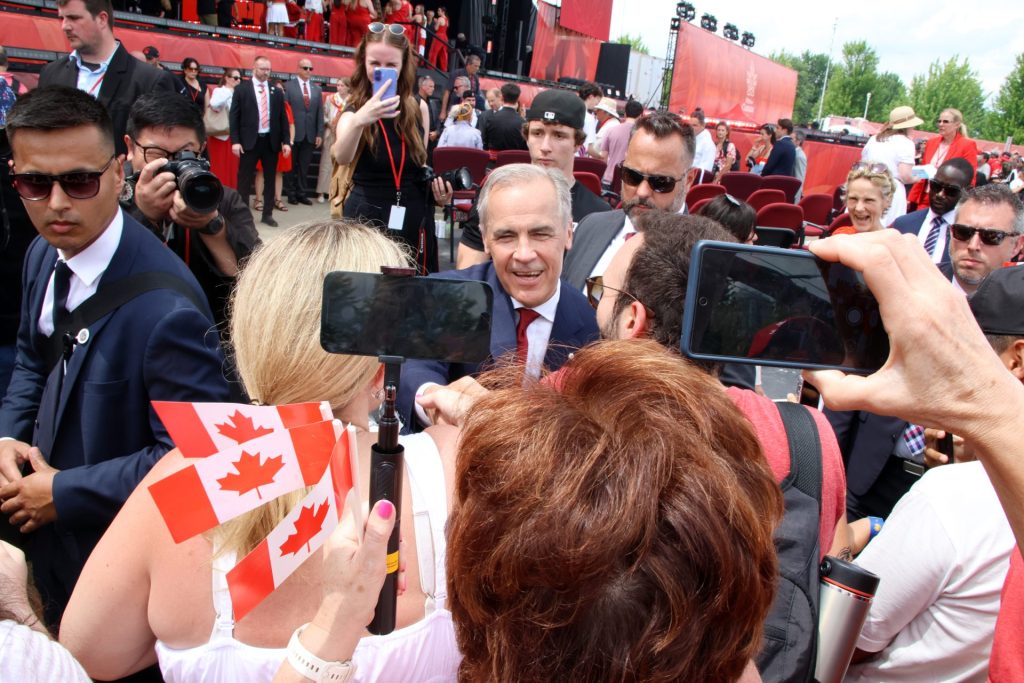
Holmstrom said many New Democrats voted for Carney because was he was “the right person to deal with the moment,” despite him not being “perfect.”
“Most people who … came from the NDP side, who voted for him this time—they didn’t do it out of some expectation that he was going to be this grand progressive savior,” he said. “It was because he had a very particular set of skills that lent itself to this moment, and they were thinking more about country than policy.”
“We knew what was on offer, and we made a conscious choice,” he added.
Holmstrom, who is Red River Métis, said he was still “particularly upset” about how the government approached Bill C-5—which was introduced and became law in 20 days—as it “did not need to be done that way.” But Holmstrom said he understands “the greater circumstance” surrounding its passage which makes the bill “less of a deal-breaker.”
Sept. 20 protest only the beginning, say organizers
Amara Possian, Canada team lead at 350.org—one of the organizations behind the Draw the Line protest—said in addition to C-5 and C-2, she’s also concerned about Carney’s 15-per-cent cut to the public service and his pledge to increase military spending.
The prime minister has promised to hit NATO’s two-per-cent gross domestic product target for military spending, and announced a pay raise of up to 20 per cent for Canadian Armed Forces members on Aug. 8.
Possian said during the election Carney wasn’t talking about issues like “pipelines as nation-building projects or scapegoating and attacking migrants.” Still, she said that regardless of who is in power, social movements “are necessary to protect what matters to us.”
“We’re choosing to side with each other, and we’re drawing the line around the demands, putting people over profit,” she said.
She explained that 350.org has held “teach-ins” across the country and developed a graphic through those conversations, outlining the Draw the Line demands, which supporters will be delivering to their MPs ahead of the protest.
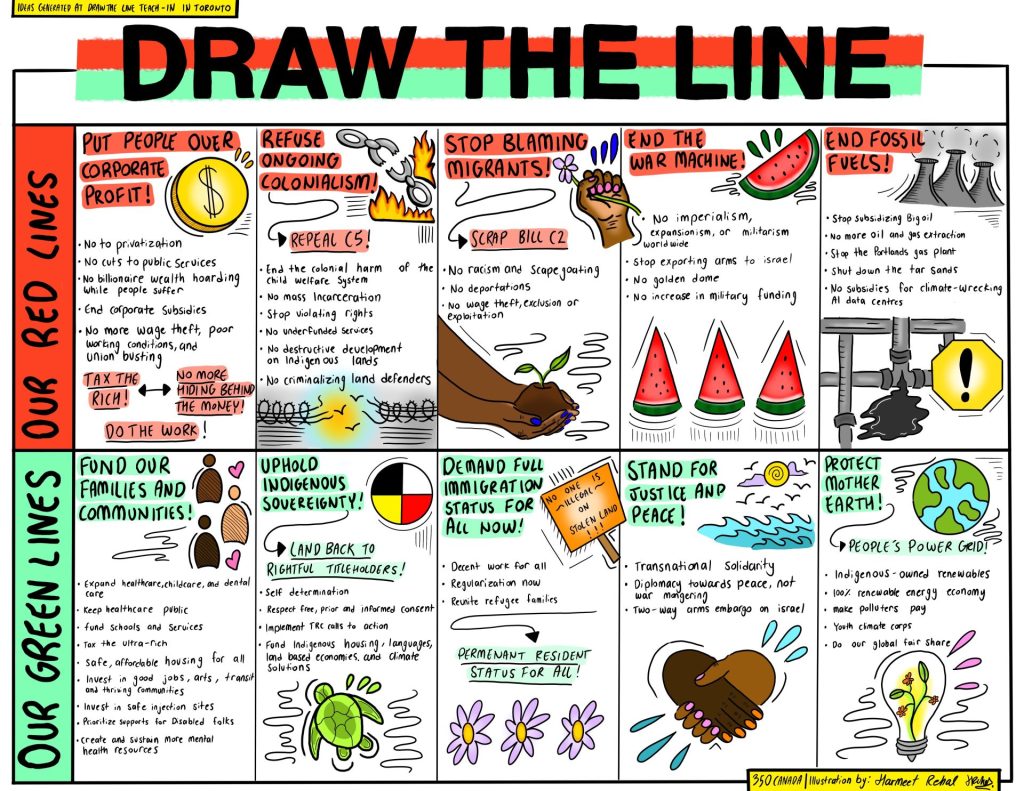
Both Possian and Hussan emphasized the protest is not an end point. They said it’s part of ongoing work to lay down “foundations” across Canada, which will continue to speak out against the Liberal government.
ewand@hilltimes.com
The Hill Times






 LICENSING
LICENSING PODCAST
PODCAST ALERTS
ALERTS













